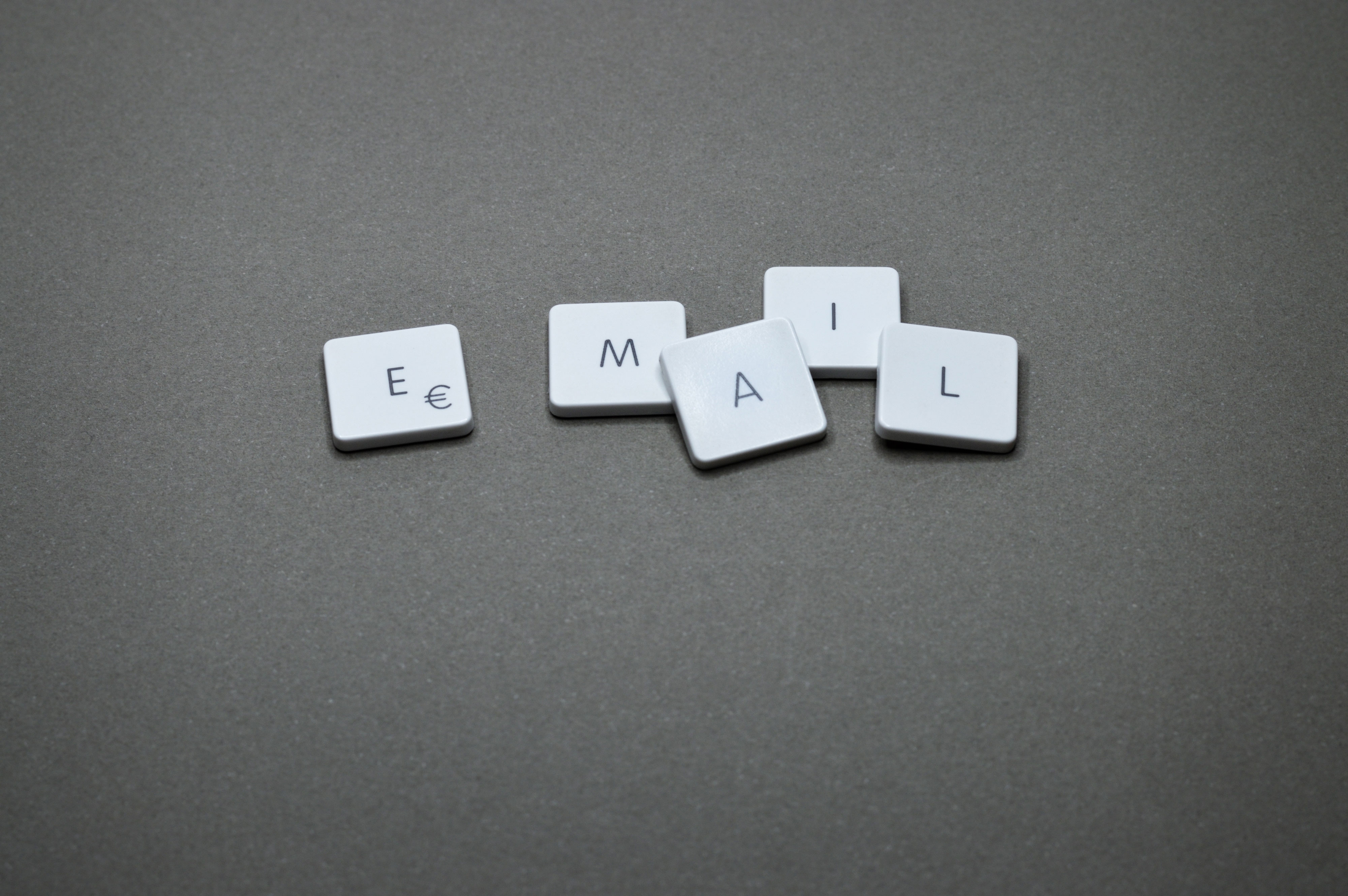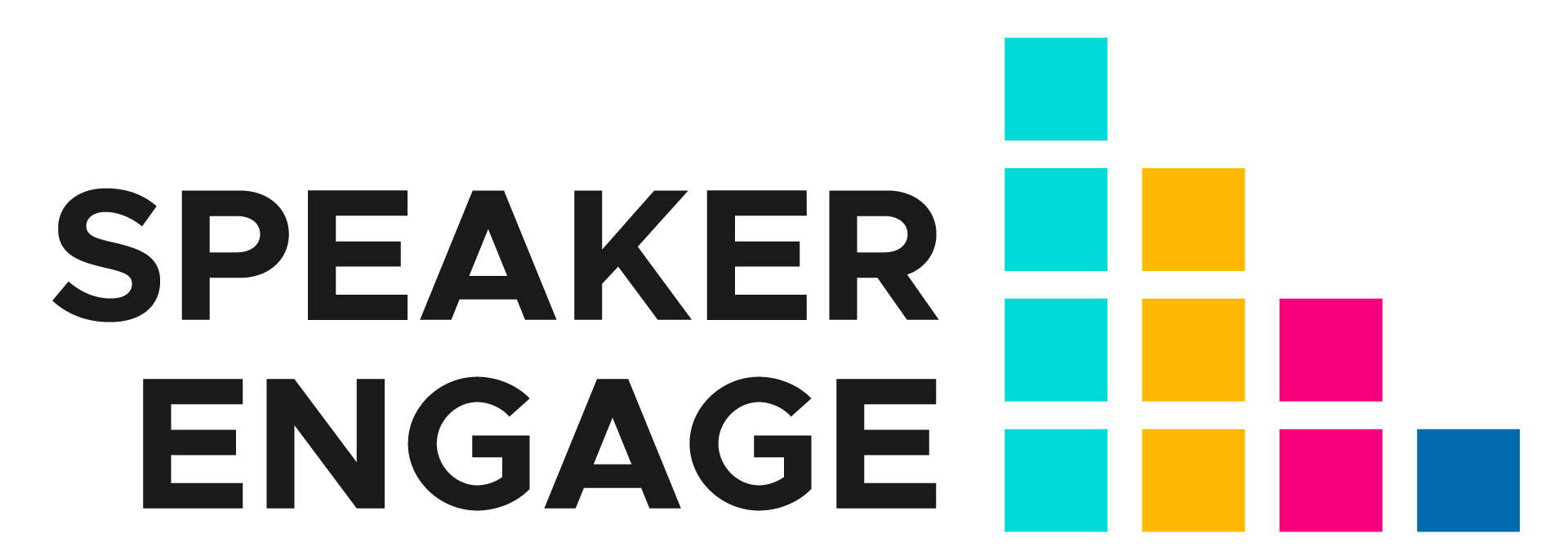
Jun 19, 2020 | Virtual Events
While event listing, you must keep an eye on little things that matter, whether virtual or physical. It starts with checking off a list of things to do before you put up an event. Even the most complex of projects have a checklist before it goes live. We’ve curated a helpful checklist of what we learned from planning ours. After you have checked off the list, it comes down to promoting the event.
Your event listing must grab the attention of visitors and tell them what’s on offer. There are plenty of events that get people’s attention online. Yours must stand out.
Choosing Right Platform for Event Listing
There are many event calendars and places to list your event online. Listing your event in a popular event marketplace will get you a lot of eyeballs. Every marketplace has specific features and benefits for the price you pay to list on them.
There are many platforms you can use for your events.
Choosing a platform is the first step you take towards listing your event. Promotion on listing directories or marketplaces needs creatives like banner images and videos. You will need to know the size recommendation of the creatives required, and each platform may have different size recommendations.
Design an Awesome Event Logo
If you are having a one-off event, create a captivating logo with an excellent brand recall. If you are creating an event series, it makes sense for you to use the same logo for all your events in that series.
While creating a logo, use a color scheme that follows your company brand guidelines. The logo you design must reflect your brand, be it the fonts, shapes, colors, patterns, etc., used in your logo. The design that you choose should be attractive, simplistic way, and social media-friendly. Remember, the logo should be the visual summation of your event!
Use an Attention-Grabbing Image
When people browse any event website, the image is the first thing that catches their attention. Images can never be an after-thought. The image must represent your event and should capture the experience your attendees can expect of the event. To ensure that your event image looks fantastic, choose a high-resolution photo that’s one-of-a-kind, inspiring, and grabs your attendees’ attention.
Here are some visual approaches:
- A picture with a person in motion always works. If it has some drama, it adds to the effect.
- If there is a person connected to the event, add their image to the creative. Use the picture of any performer at the event or a lovely photo of a participant.
- The image could depict the positive of attending the event or the negative of not attending the event.
- Show the nice part of the event like the food, brightly lit spaces, etc.
- An image with a snippet of the event or a visually exciting aspect is an excellent way to grab attention.
Make the Title Alluring
Once you hook the prospective audience with your image, work on the title. While the image is the first thing people see, the title is the next thing. You have only a few seconds to make an impression. To make it count, write a catchy title to make your prospective audiences stop and investigate further.
It need not be sensational or unbelievably fantastical. It must be kept short and simple, without omitting the selling points.
For example, ‘Live Sales Webinar’ may not light up someone’s eyes. Instead, writing ‘Achieving Sales Success in Asia’ will grab people’s attention, and they may stop at least for a few seconds, which is enough time for them to decide to click on the title or move on.
Note: You may also choose to show an image and say something about the event on the image to reinforce the event’s title. Ensure the proper relationship between the title and image.
Write a Convincing Copy
It is exciting when people show up at your event. And your excitement must show in your copy.
In a few paragraphs, explain why you think this event will help people and why people must be excited about the event. Here are a few key points:
The copy must finish within a few paragraphs, preventing prospective audiences from running into a wall of text. Keep paragraphs short of making them readable. Include the names of the speakers and what the audience can expect from them. Let the audience know how they will be entertained and what they hope to gain from the event. Don’t forget to include the price and what it covers.
- Must be Professionally Written
How you write matters as much as what you write. The event description is a representation of your company. Though it doesn’t mean that you will not organize a well-managed event, it sure makes internet fodder for ‘grammar nazis.’
Poorly written copies with grammar errors circulate on the internet, forcing you to run for cover. It also must be kept free from inappropriate slang, texting abbreviations, typos, and grammatical errors. Use tools like Grammarly to create a professional copy.
- Optimize for SEO and Use Tags
Search Engine Optimization (SEO) is not only used to write websites and blog copies; it applies to your event listing content also. After all, your event listing is a web copy too. Research relevant keywords that people use to look for events in your industry and use them in your document.
Use important keywords to your event title to maximize exposure. Look at other successful event listings and take inspiration for alternative keywords. Most event listing websites will need you to categorize events so that people can find your events easily, where keywords may come in handy. Use them to help your audience narrow down their search.
- Make it Easy for People to Reach You
Make life easy for people to reach you. They should be able to find your event by including a map if it is in a physical location. Registered users can click on the map to open the app on the phone and go. They should also be able to find your social media profiles and be able to share your event on their social media profiles.
- Reinforce the Messaging with a Short Video
Including a video to your copy is also an effective strategy to grab attention. You can show speaker details, quick information about the event, and demonstrate what your audience can look forward to in the video.
Adding footage from your previous event will pique audience interest. There are free video creation tools like Lumen5 that will do the trick. You can easily arrange how you want the information to flow with pleasant music that reflects the event’s mood.
Test the Platform
The recent worldwide pandemic has forced everyone to host events online. In the future, event managers may conduct hybrid events. If your event is hybrid, you must perform systems check at the physical location while your digital markets must test out the online events platform.
You must also test out the platform before you publish the event. Make sure the title and the description read well, and see if the image is going well with the report or not. Also, make sure to add your tax details and bank details so that the payments are routed to your account.
In the end, make sure people can enter their name and email address and then make payments. You don’t need to charge your credit card, but see if the payment link will be the right payment processing platform. After everything is alright, make your event live.
Summing Up
Using this guide to listing events will make a great first impression. Brainstorming on crucial things like the title, banner image, and description will ensure that your event gets the right kind of attention that it deserves.
If you are looking for a one-stop solution to all your event managing activities, check out Speaker Engage. Speaker Engage is not just an event listing platform, but it has multiple functionalities like speaker management, a dashboard, and more. We have an extensive Event Directory to list and redirect audiences to your event. Learn how you can try it for free or get in touch with us at support@speakerengage.com

Jun 19, 2020 | Virtual Events
Virtual events are all the rage at the moment. From stress busters to pilates classes, the online space is more preferred now owing to the current global situation.
Contrary to popular belief, virtual event organization can be tricky. It isn’t just bringing together a few speakers and putting up a show last minute. Virtual event planning requires more intensive preparation and a well-thought-out process than physical events.
Using Speaker Engage, you can plan and organize your virtual event to be better. Speaker Engage can also be your event planner with in-built functionalities to ensure smooth communication between your speakers and sponsors.
Coming back to virtual events, multiple things can go wrong and reflect sourly upon the organizers. It is better to identify them and take necessary measures to avoid them since precaution is better than cure.
Low Turnout
A low turnout is frowned upon regardless of whether the event is hosted online or offline. It would mean that the audience that did turn up would question the authenticity and quality of the event and could even ask for a refund (worst case scenario). It usually happens when an event is hurriedly organized with little or no planning at all. In this case, your speakers or presenters are let down as well, as they may not partner with you for future events.
How to Fix it?
Plan. Chalk out a well-detailed promotional strategy while hosting online virtual events to increase the audience’s urge to take action and be involved. Prepare a marketing list, send out emails, create promotional videos and content, and share them on social media. Leverage your industry contacts and promote within niche circles.
Have a well-thought-out budget for your paid promotions, and always follow up. Send notifications and reminders to those who showed interest in your posts as well as to those who signed up. Keep them informed and engaged, and ensure a good audience at your event.
Tech Crunch
Be it buffering or a lag in communication, any connectivity issues are among the worst situations for a virtual event organizer. You promise your audience a real-time event that would in no way deter the experience of an actual live event. Once the event starts running like a pause-play marathon, your audience will no longer be interested.
How to Fix it?
Choose your virtual event hosting platform wisely because it plays a crucial role in online event engagement. It mustn’t be too heavy for your audience to run on their home systems.
Have a tech team available to take up any connectivity issues the audience faces and be equipped to walk the audience by fixing any problems.
Distorted Voice and Visual
It is not pleasant when a speaker or an organizer cannot communicate well to their audience, especially during a virtual event, where the voice must travel through the internet. Your voice may be distorted, causing a massive inconvenience to the audience. Same with visuals.
How to fix it?
Invest in good-quality mics. Communicate to your speakers that you would want them to be using mics of certain benchmark qualities because it will enhance the quality of the video and play a crucial role in virtual event production plans. An excellent microphone to invest in is the Sennheiser e845 mic. This model is well suitable for presentations and conferences.
Invest in good cameras for speakers as well. In the era of online interactive experiences, proper recording equipment is an indispensable tool for presenters. We suggest the Canon XF200/XF205. This model is an advanced HD video camera that professional broadcast corporations use. This means any footage filming on this unit is good enough for TV.
Poor Presentations
The two sides of a virtual event are sounds and visuals. We’ve already covered the importance of a good mic and camera, but what about the other visuals, the presentations?
Flashy colors and text-heavy presentations are an eyesore. A speaker’s presentations speak a lot about their expertise as well as your quality as an event organizer. Not just that, long drawn-out presentations bore the audience. If they wanted to go through PPTs, they would have chosen to go to SlideShare.
How to Fix it?
Get a graphic designer to design the presentations for your speakers, or use Beautiful.AI to build your professional content. Keep it classy with minimal text, a maximum of 4 lines per page. Pictorial representation of your data/content is what your presentation should have instead of text alone.
Stick to color schemes and follow it in the presentations being prepared for all your speakers. In short, create a template that will keep the audience from second-guessing their participation in the event.
An Engagement Stopper
One of the highlights of a live event will always be the audience lingering around the venue, chatting, catching up, sharing contacts and ideas, and setting meeting appointments. A mistake you must never do as an event organizer is to stop engaging with your audience as soon as the event is over. This doesn’t sit well with your audience, who are actually accustomed to the after-event rituals of a live event. You must not deny them that experience.
How to Fix it?
Just as you have prepared a strategy for the event, prepare another for after-event engagements. Provide space for your audience to interact with each other and hold discussions if they wish to.
Even though virtual events are a class apart from physical events, you must always be aware of the experience you are handing out to your audience as an event organizer. There must be a stage in your virtual event planning phases where you must consider all that could go wrong and prepare for contingencies.
An actual event organizer is prepared to face the glitches in real-time than denying the chance of anything wrong happening. While chalking out Plan A to Plan Z, always ensure that the virtual event management plans are smooth and user-friendly for the audience and speakers.

Jun 17, 2020 | Virtual Events
We learned it the hard way that not everything goes according to plan.
The event industry took hit after hit, proving this without a doubt. Online events, its Plan B, has now officially become the primary plan. The game rules have changed, we might think, but in reality, not so much.
All it takes for a successful virtual conference/event is a little planning.
Why the special treatment?
Whether they are teleconferences, webinars, podcasts, or hybrid events, online events need the same planning and attention as their offline counterparts. Hosting virtual events is not just about finding the perfect platform and then publicizing the event. It is about being meticulous in planning, armed with enough knowledge and an all-encompassing checklist.
A checklist that covers the most important aspects of virtual events works equally well for veterans and beginners. It not only ensures that you don’t miss things by checking things off (a wonderful feeling in itself) but also gives you a platform to measure your goals against your actual achievements.
What must the virtual event checklist cover?
The primary duty of a checklist is to aid you in pulling off the event seamlessly. This is why the list needs to be exhaustive. Does it remind you of things easily forgotten? Does it ensure that the basics are not overlooked? Does it add that extra layer of a surety that you can benefit from?
You could overlook several things while putting together a virtual event, so, adopt the following checklist we have put together for you.
-
What is the event objective?
It is the beginning of it all. It is where you determine the reason for conducting this event. Is it to educate your audience on a particular event? Or is it to market a specific product you’re proud of? Or maybe, you just want to generate some leads and garner potential customers. Whatever the objective, you must first decide on one because your entire event revolves around it.
-
Who is your target audience?
Once your objective is in place, it is time to identify your target audience. Who do you want to talk to? Which faction of the population do you think your event will benefit or influence? You need to narrow down your preferred audience for maximum impact.
-
What type of event do you want to host?
Your objective will give you an idea of what kind of event you would have to host to get your point across. Will one session do, or do you have to go for a multi-day event? Does it have to be a running series? These questions are essential for you to create the content for your event.
-
What platform will serve you?
Once you have an idea of the kind of event you want to host, it will clarify the platform that would suit your needs. You need to choose one that suits your audience and your purpose well. Research well on the different functionalities offered by other platforms and make sure your virtual conference checklist has it as a priority.
- Who will be your speakers?
When you select speakers for your event, keep in mind that they should have a good grip on the topic at hand. They must also be comfortable doing virtual events because, depending on the platform, the experience will be quite different from its offline counterpart. You must also decide on how many speakers you need for your event. A panel will be the best choice in most cases, which means you need more than two speakers.
-
When will your event take place?
This one is simple. Fix the most appropriate time and date for your event, depending on your audience’s geographical location, speaker availability, and varying time zones. We said simple, not easy.
- How engaging is your content?
Always, always have a structure laid out for your content. Fight the idea to be extemporaneous. It is better to be prepared rather than rely on your wits not to fail you. If you have multiple sessions, prepare introductions, conclusions, and ice breakers. Have a clear idea of the points going to be discussed in each session. Your content must be engaging. Sprinkle interesting facts (numbers will also help) in your presentation to keep the interest level high.
- What is your promotional plan?
Once you have your content and event details ready, equally important is your plan to promote it. Spread awareness by coming up with a fool-proof promotional plan. We’re talking digital. Set up online campaigns and registration portals that will drive maximum traffic to your event. Ensure that it is easy for people to register, with as few steps as possible.
Check Off on Preparation
Once you check off the last item in this checklist, you’ll be off to a great start with your virtual event. They might seem simple and easy to remember, but why take the chance? Keep the checklist ready with all its associated documents, and they will turn out to be that extra pair of hands you had always wished for.
Need more help than a checklist for virtual events to run your event smoothly? Speaker Engage can be a Godsend with its multiple interesting functionalities like speaker management and an all-covering dashboard. Don’t just take our word for it. Here is what Event MB, the first resource online for event professionals worldwide, has to say.
Claim your 30-day free trial of Speaker Engage now!

Jun 10, 2020 | Virtual Events
Fact: The COVID-19 pandemic claimed the lives of thousands.
Fact: It shut down businesses and entire nations, affecting the survival of multiple industries.
Prediction: This will not end any business in the future, it will only alter it.
The event industry saw a massive number of cancellations across the globe, resulting in a huge step back for event organizers. But once your back is against the wall, there’s only one way forward. The industry adapted to virtual hosting and streaming.
Forced by necessity, we saw a rise in virtual events recently. It’s not going to be a one-hit-wonder for sure. The future will see more changes that are exciting and seamless.
Improvement in Digital Infrastructure
While every country is bound to open for business and commerce soon, digital infrastructure will be further strengthened. The pandemic caused people to work from home, and people who were sick worked in isolation. In the past few months, people have realized that you do not need or it is not essential to travel to a different continent to attend a meeting or an event.
Though we all love events, we must point out that the digital solutions people found to keep training, meetings, and more going in the comfort of their homes, allowed them to see possibilities of continuing these in a post-COVID world.
Whether you are in the event industry or your business utilizes events for building its brand and for marketing, we can expect events to look and feel different.
What After the Pandemic is Over?
In a few months, the pandemic will dissipate. But according to estimates, the economic effect may last for some time. Everything may not return to normal soon. Though there will be a huge appetite to conduct offline events in the coming months, it will drive up insurance costs which will also jack up the cost of logistics, transportation, and other event management costs.
For those who depend on events, a physical event may not be as profitable as it was once, at least for a little while. After the economies reopen, there will be a period of financial rebuilding for most businesses. The continuous cash flow which they depended on for survival did not happen during the pandemic. If you are conducting an event, you cannot charge your attendees with the pre-2020 prices.
Virtual events may be the answer for those who wish to keep prices low. However, virtual events will not be a replacement for in-person events. The increased costs of conducting events in a physical location will drive organizers to move the entire event online or conduct a hybrid event.
There will be a steep rise in hybrid events where parts of the event will take place in a physical space and others that do not need a physical presence will be delivered digitally.
We Will See an Influx of Hybrid Events
It may not be entirely safe or a smart move to book a physical space for your next event. The problem is, after months in isolation, some people may feel strange being in a crowd. People may take time to get used to non-social distancing.
How do event managers and marketers conduct a better event when attendees may find it hard to show up to a tightly packed event location? Consider lowering the number of people that can come to the physical location. For the rest, you may video stream it. We will get back to full rooms in the future.
We mean, in the future, online events will complement in-person events where some attendees can log in from around the world while others attend it on location, or some parts of the event can be made available to people in a physical location while some parts of the event are made available only online.
Hosting the Future
Managing events online will be a new challenge. Event managers can use technology to enhance events. Social media can be used to broadcast event happenings and opinions of the event. SpeakerEngage is an event planning and managing platform. Be it offline or online, you can manage speakers and sponsors, make communication easier, and reach people. Sign up for the 30-day free trial today.

Jun 2, 2020 | Virtual Events
So, you just completed your first-ever virtual event activities, and it was a resounding success. Great! What now?
This is where most marketers fail to leverage the power of virtual events fully. Sure, you got a thousand registrations for your event, and there was significant participation, but all of this is for nothing if you don’t manage to convert them into paying, loyal customers.
And how do you do this?
Allow us to take you through our tested, proven strategy to convert leads into customers.
Step 1: Send them a Thank You mail
This one is pronounced and is just basic courtesy. Part of being a good host is sending a thank you mail to the participants for taking time out of their busy day to attend your event.
But there’s more to it!
Ever thought about sneaking in a goodie in the mail?
Most marketers add a link to a survey to rate the event. Sometimes they even ask for written feedback. This is a bad idea. You really don’t want to make people do some more work. Most will simply ignore it if you’re just soliciting a review.
Here’s what you do instead. Send them a link to a survey anyway, but this time offer an incentive.
“Get our awesome marketing ebook for free! All you have to do is complete this quick survey.”
Sounds good, doesn’t it?
You’re guaranteed to see better results if you use this strategy. You’ve also started to condition them to think of you as the “useful resource person.”

Step 2: Have a Pipeline of Content
After the event, you’ll find yourself sitting on a massive pile of data, thanks to your meticulous data gathering strategy. If you’ve been brilliant, you now have a good idea about your audience demographics. All you need to do now is to repurpose the content generated during your event and keep feeding it to your new audience.
You can repurpose the content into:
- A series of articles
- An ebook
- A podcast episode or two
- A summary video, or
- As an infographic, depending on the topic
For example, let’s say there was a panel discussion on “Marketing in The Time of COVID-19.” Without a doubt, such a topic will elicit lively discussion from your panelists. Make an ebook out of this debate and distribute it to your audience. This should be at the top of your virtual event marketing plan at all times.
Be mindful of how often you’re engaging with your audience. Too many emails in a short span is a sure way to the Spam folder. Space out your emails, but make sure each one has a free resource linked inside it. This free resource must be ideally hosted on your brand’s website, whether an ebook, a podcast, or an infographic.
After a few iterations of this, your brand will find a place in their minds. Next time they have a query, guess who they’ll think of first?
You cannot buy loyalty. You need to earn it. If you still haven’t earned their loyalty, worry not.
Step 3: Invite Them to Everything
Don’t you just love being invited to parties all the time? Sure, you might not have the time or the interest to go to one, but just being invited makes you feel special.
Leverage this emotion and invite your attendees to all your future endeavors. Soon, you will have an army of loyal followers lurking and hopefully actively engaging in all your events.
Step 4: Begin the Push
You’ve welcomed them with open arms, plied them with goodies, and made them feel special. Now it’s time to push your offerings gently. The keyword here is “gently.”
As a safe bet, do your virtual event planning by mentioning a limited-time-only discount offer. If your product has a fingerprint-free trial period, let them know about it in all your conversations.
Urgency is a proven marketing tactic. Convey to your audience that your product/service is available for a significant discount but only for a limited time! If you’ve played your cards right, you would’ve gained a loyal customer by now.
To Wrap It Up
Seasoned marketers know better than to poach new customers without offering them value. Hosting virtual events — free or paid — is a great way to provide value.
Planning virtual events and hosting them isn’t exactly an easy job. You need to coordinate between your panelists, ensure that the correct mail goes out at the right time to the right people, prepare a thorough checklist for the virtual event, and stay on top of all queries from all stakeholders at all times.
Yes, Speaker Engage can do all that and more. Get in touch with our expert consultants today!

Jun 2, 2020 | Virtual Events
It’s that evaluative retrospective journey back to the beginning that often reveals the essential truths.
It’s true for your life, and it’s true for your events.
A post-event debrief is the most effective post-event analysis and an essential aspect of Virtual event management that you can do. It helps you revisit the event and learn what went right, what went wrong, and most importantly, what you can do to make it better next time.
Deconstructing the Event
Once you conclude your event, you want to let out a deep sigh, pour a glass of a beverage of your choice, and relax. Not the available option, though. An event debriefs, if you need it to provide results, must be done as soon as possible after the event ends.
The first thing you need to do for an event debriefing is to invite all the key players associated with it if you had a team working with you. Ensure that the number of people you invite won’t hinder your conversation. Always remember what happened to the broth when too many cooks were involved in its preparation.
You’re bringing together dynamic people in one room. Sparks are bound to flare. It is vital to provide a safe and nurturing environment to have a healthy discussion on the event.
So how do you do this? Stick to your virtual event planning and agenda. That’s right. Before you invite the key stakeholders, you must draw up a plan so that you can bring the discussion back in line when someone deviates.
The Fundamental Questions to Tackle
Now that you’ve finally waded into the deep waters let the truth unfold. Ask pertinent questions, even if they are complex, especially if they are involved.
Did we meet the event objective?
Perhaps the most crucial question of all is the one where you evaluate whether you hit the mark or not. Remind the gathering of what the event objective was and discuss the results. Did you actually meet it? If not, did you at least come close? What went wrong? What could you have done better to stick to the plan?
There’s also a possibility that you might have exceeded your expectations. It’s alright. Go ahead and applaud yourselves.
How did we achieve our online event engagement?
Focus on the good before you jump to the bad. Analyzing what went right is as important as analyzing what went the other way. The answers to this question will work as guidelines for success in your future events.
It will also help in keeping the energy up and imbibing optimism.
Where did we fall short?
Now to the bad news. Analyzing what went wrong is going to be a very tiring session. Very few will take collective accountability, and most others are happy to assign blame. And this is where sticking to the schedule helps. Create specific questions as to what went wrong and how you can do it in a better way. As soon as you receive a working answer, move on.
Remember, the answers to these questions are valuable. So do not shy away from them.
What did we learn?
The most critical question is this very last one. The answers you were able to collect during the debriefing session will give you a repository of learnings, which you can apply in the future.
Ensure that you integrate the learning into your processes and SOPs so that they become part of your virtual event management and planning.
When You Plan How to Plan
The dashboard on Speaker Engage gives you insightful data on all your events. It can easily be a starting point for your debriefing session because you’ll be armed with data before you begin.
If you look at it, a debriefing session is a perfect end to an event well done. You put the pieces together painstakingly for a successful event, and then you take it apart, mightily, to unravel the success.









